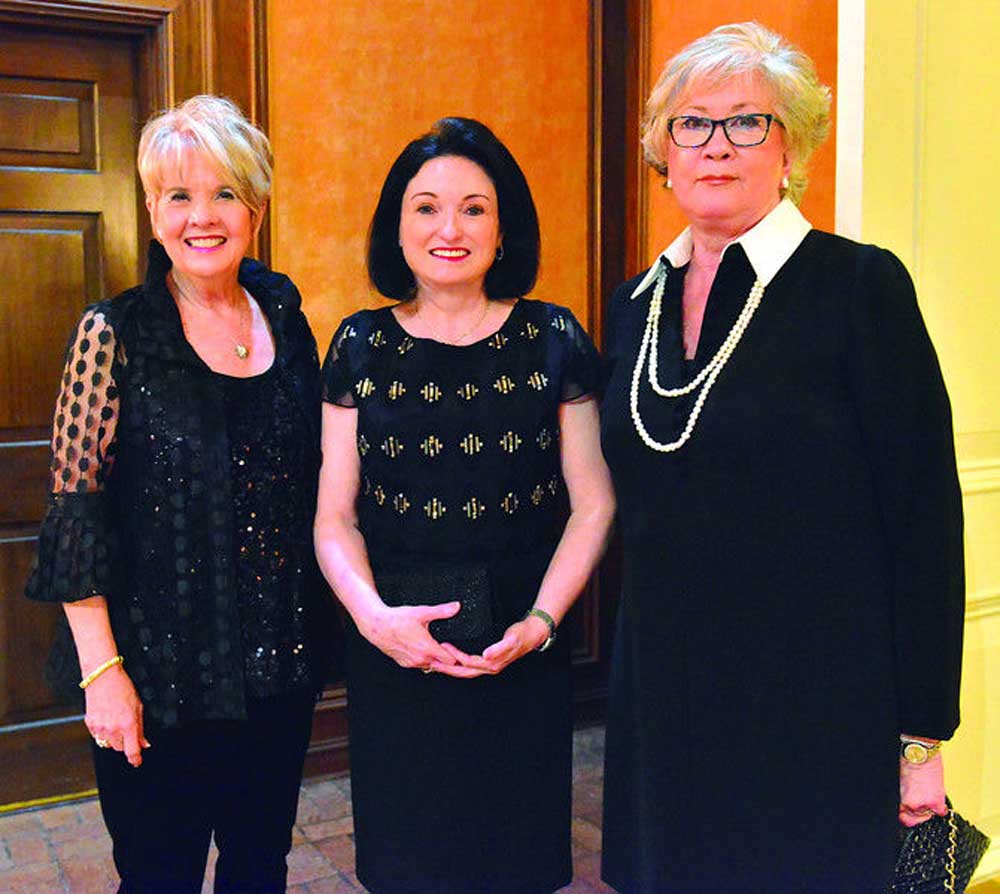Family Matters: The state of a union
Published 12:05 pm Wednesday, July 10, 2019

- Jennifer Flanders
When my husband and I built a house in Stonegate 16 years ago, we planted two ginkgo trees on either side of our front yard. The trees looked identical the day we put them in the ground. But while one flourished, the other floundered.
The tree on the west side of our house got plenty of sunshine. It was planted on level ground, not susceptible to erosion. Tall, straight and symmetrical with deep green leaves, it more than quadrupled in size during the years we lived there.
The tree in the east yard didn’t fare so well.
It was planted on a slope, where water ran off instead of soaking in. Surrounded by larger trees, it stood in shade most of the day. Gophers dug tunnels through its struggling root system. It served as “base” for far too many games of tag and showed visible signs of wear from our little ones whipping the tree back and forth as if it were a stick horse.
Consequently, the trunk was crooked and spindly. Its uppermost branches were broken off at some point, so it’s growth was severely stunted — barely 8 feet tall, as compared to its 45-foot brother. My husband was sorely tempted to just chop it down and plant another in its place.
He nearly acted on that impulse one spring, but I spotted him with ax in hand and begged for mercy on behalf of the runt. Doug relented, and I did my best to nurture the scrawny thing back to health (a little staking and strategic pruning worked wonders for its appearance).
It’s important to note that my ax-wielding husband was not responsible for this tree’s sorry state. He was simply responding to the damage already done by its other enemies — gophers, erosion and overly rambunctious children.
If I wanted to fault somebody for the tree’s miserable appearance, I’d have to fault myself for not tending to it more faithfully and vigilantly protecting it from its various assailants.
No, Doug wasn’t to blame, nor did he have anything against ginkgo trees in general. He had no desire to fell the heartier specimen, and although he considered the stunted ginkgo an eyesore, he was perfectly willing to replace it with a new one. The presence of the healthy, robust ginkgo in the west yard — and the knowledge that there were countless others like it — reassured him that it was possible to raise one successfully.
But what if the west tree were just as sickly and stunted as the east? What if every ginkgo tree Doug had ever encountered were uniformly puny and pathetic? Wouldn’t it stand to reason that he might be less willing to take a chance growing one himself? That he might decide to plant something entirely different?
At least he wouldn’t be pinning his hopes on something with a high failure rate. Would you buy a tree that had, say, less than a 50 percent chance of surviving?
I think the reason some groups have tried so hard to “redefine marriage” these days is that so many “traditional marriages” — at least the marriages they’ve personally observed or experienced — seem sickly and unappealing.
Although I disagree with their response, I do not consider such revisers the enemy. They didn’t cause the problems; they are merely reacting to them.
The damage was done by a much subtler adversary. Like the gopher that tunneled under my ginkgo, this enemy attacked marriage at the root, digging away at its foundation, gradually shifting our focus away from God and onto ourselves.
God’s design for marriage — that we mirror the love of Christ and raise children for His glory — is no longer our primary concern. Finding happiness and personal fulfillment is the new end goal.
As Danielle Crittenden observes in “What Our Mothers Didn’t Tell Us,” “We may pledge to love each other until death do us part — but we blanch at the first hint of sacrifice.”
How many couples have I heard rationalize their divorce by saying “we’re just not happy together anymore”? I’ve lost count.
More likely than not, these men and women had good intentions of making each other happy when they first wed. But if happiness is all they seek, it makes sense they’re ready to throw in the towel when happiness is not forthcoming.
But is unhappiness really a sufficient reason to call it quits? Should it drive them to divorce?
Not according to a report released by the Institute for American Values. Their studies found that two-thirds of couples who were unhappy in their marriages, but stuck it out anyway, considered themselves “happily married” just five years later. In fact, “the most unhappy marriages reported the most dramatic turnarounds. Among those who rated their marriages as very unhappy, almost 8 out of 10 who avoided divorce were happily married five years later.”
Even so, many couples don’t persevere long enough to discover this fact. And that’s too bad. It’s bad for their families, but it’s also bad for society as a whole. Strong and stable families make for a strong and stable nation.
Couples need to understand that happiness springs from commitment. Not the other way around. Allowing something as volatile as happiness to determine whether you stay married or not is a sure way to destroy any chance of building a love that endures.
We must stop treating happiness as if it were a destination we have to trample over others to reach. In reality, the route to true happiness is through selfless, sacrificial love.
Deep, abiding joy is a disposition that is naturally cultivated as we seek to live for God’s glory. That, after all, is the chief end of man: To glorify God and enjoy Him forever.
It’s the purpose for which we were created in the first place, and we’ll never find lasting, genuine happiness — in marriage or in any other endeavor — so long as we neglect it.
Jennifer Flanders has been happily married for nearly 32 years. Thanks to the never-failing grace of God, their marriage has flourished like that west-side ginkgo. To read more of her writings, please visit https://lovinglifeathome.com.






